Are you looking for effective Account-Based Marketing examples for your B2B business? Account-based marketing (ABM) is a powerful strategy for B2B companies, and understanding the basics of ABM and its various applications will help you craft an effective ABM campaign for your business.
In this blog post, we'll explore some of the best ABM examples in the B2B space, and provide tips and resources to help you craft your own winning strategies. From targeting large enterprise customers to focusing on small businesses, there are many different approaches you can use to tailor your ABM campaigns to best serve your business goals.
So, if you're ready to take control of your B2B marketing efforts and discover some great ABM examples, read on and get started today.
|
Account-Based Marketing Account-based marketing (ABM) is a focused growth strategy in which Marketing and Sales collaborate to create personalized buying experiences for a mutually-identified set of high-value accounts. |
10 Account-Based Marketing B2B Examples
Account-based marketing (ABM) can be an effective way for B2B companies to attract and engage potential customers on individual accounts.
From creating personalized content to leveraging automated campaigns, ABM is a great way to get more ROI from your marketing efforts.
So let's take a look at 10 case studies of successful account-based marketing strategies from some of the world’s top brands.
1. Personalized Storytelling by GumGum
GumGum, a computer vision company, leveraged account-based marketing to secure deals with T-Mobile. When they discovered that the CEO of T-Mobile was a huge Batman enthusiast, they created and printed 100 copies of a comic book titled T-man and Gums. This was sent to various T-Mobile outlets. GumGum gathered data concerning its target audience and crafted content explicitly tailored to them.

Producing tailored content is a great way to capture your prospects' attention and demonstrate that you are aware of their pain points. When looking to attract a new client, T-Mobile, GumGum did precisely that.
Using this method, they could determine their client's interests and then use the insights to craft a narrative that allowed them to form meaningful connections. Innovative insights about brands can be employed for various forms of engagement.
2. Hyper-Targeted Approach by LiveRamp
LiveRamp, a well-known identity resolution provider, has demonstrated that hyper-targeted account-based marketing (ABM) is more effective than broad marketing campaigns which aim to sell to as many people as possible.
LiveRamp aided several Fortune 500 companies to maximize their marketing with expanded approaches. Their secret weapon was pinpointing their target. When originally implementing their strategy, they composed a shortlist consisting of merely 15 big-value customers and attained a 33% transformation speed in just four weeks. As time went on, they augmented their consumer LTV by 25 times in two years.
Determining which accounts are most worthwhile is the key takeaway from LiveRamp's campaign. This initial step is pivotal to achieving a prosperous ABM campaign. Following this, strategies should be formulated accordingly.
3. Picture Showcasing by Robin
Robin, an organization that offers conference room booking software and tools, experienced great success in their ABM campaign when they featured stunning pictures; it seemed to talk about software and tools alone was too boring for the target market.
Therefore, they chose to display pictures of gorgeous office spaces belonging to their established customers. This seemingly straightforward concept helped them gain numerous clients. By highlighting their attractive office spaces, their website traffic rose by 50%, and lead generation improved by 20%.

This example illustrates that a successful advertising campaign does not require significant investments if you have an innovative, inexpensive idea.
4. Segmented Approach by DocuSign
DocuSign is a company that offers an e-Signature transaction management solution. The greatest obstacle they had to overcome was that its customers belonged to six different industries. The company implemented an ABM strategy to deliver more personalized experiences and generate more traffic.
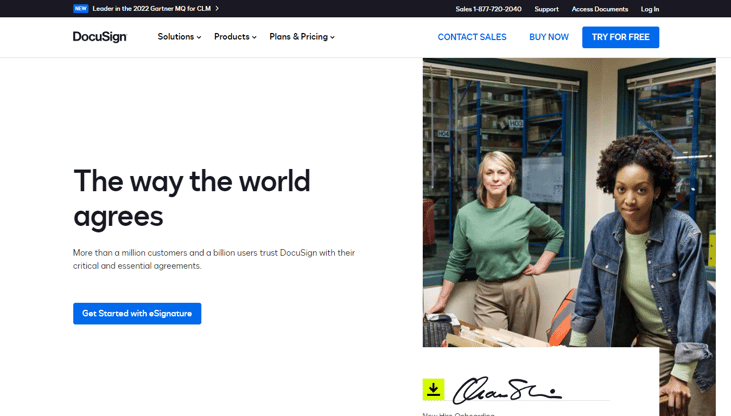
Its web platform incorporated segmentation and content targeting. The visitors were asked several questions to identify which of the six targeted industries they belonged to. Based on their responses, DocuSign provided industry-specific messaging, visuals, customer stories, and peer logos.
Segmenting and adjusting their content offerings for customers increased their sales pipeline by 22%. This strategy can be beneficial for businesses that serve customers from multiple industries.
5. Marketing and Sales Team Collaboration by Salsify
Salsify's approach to ABM was one of a kind. In New York City, they organized a roadshow that featured brands like Johnsons & Johnsons and Google as speakers. At the same time, their marketing team used social media to reach out to their target audience.
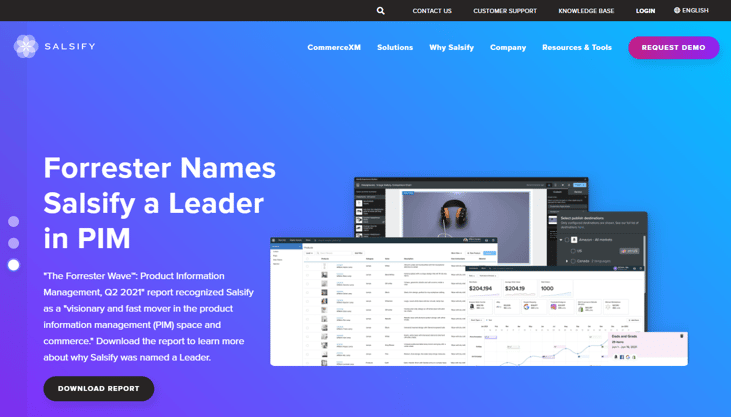
The team targeted customers with ads and emails, then passed them on to the sales team. Their marketing and sales teams working together enabled them to close dozens of accounts in a mere two hours. Furthermore, they achieved an impressive 22% increase in their conversion target.
Using ABM with a combination of multichannel marketing tactics and collaboration between the sales and marketing teams can deliver unexpected benefits.
LinkedIn sales navigator is an effective tool for connecting with potential customers. It is especially useful for B2B businesses to find it relevant. This idea is to craft your message in the same way you would tailor an email. However, this topic is more serious, as a low acceptance rate on LinkedIn could cause your account to be banned.
Therefore, emails that sell have the goal of determining their desired customer. This is accomplished by examining the secondary network and the account's activity over the last 30 days. This verifies that the account is up and running, and contains something shared in common. The individualized message is either based on shared characteristics or distinctive information about the account. LinkedIn reports a 40-45% acceptance rate and a 30-35% reply rate.
For any B2B company, LinkedIn is the best place to start connecting with key decision-makers of the target company account and get a quick conversion.
6. Giving before Receiving ABM strategy by O2
O2, a British telecommunication provider, has faced intense competition within its industry. They implemented an innovative ABM strategy to increase their market credibility. The company compiled a list of their target organizations and with over 2000 employees working in those organizations.
![]()
The company invested effort into creating customized reports for each of its desired companies. The reports contained in-depth data such as how much money the organization could save and how much additional income it could gain utilizing O2's services. The clients received these tailored reports.
The sales executives at O2 then followed up with individual clients for face-to-face meetings. This strategy resulted in a 67.5% conversion rate.
Offering something of value to your clients before you try to sell them something can help build their trust in you. Your brand can benefit from an Account-Based Marketing strategy as well.
7. Personalized and Customized Content Experience by Snowflake
Snowflake is a well-known cloud-based data warehousing business. Snowflake opened up and kept on conversations with specific accounts using personalized and customized content. This helped the firm communicate in a meaningful way with target accounts. They created a library of high-quality content and utilized them to provide a personalized content experience for particular target accounts.
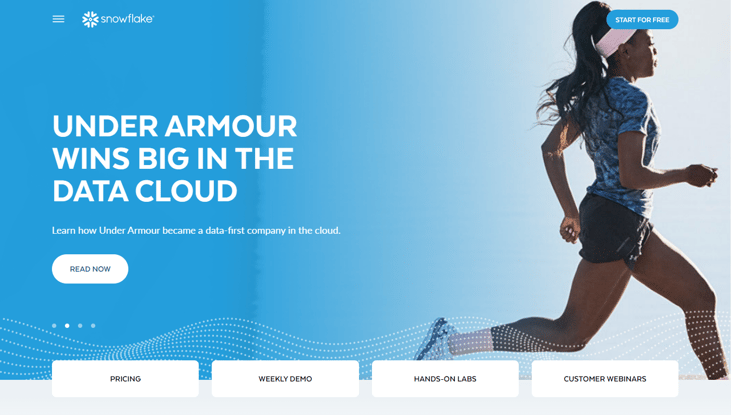
Snowflake is running 500 account-based marketing campaigns simultaneously, each designed to reach its ideal target customer.
To make this happen, Snowflake has six marketing professionals working closely with their sales team. One might assume that all this custom-made content is intended to be viewed exclusively by the potential customer. Snowflake publishes it publicly on the internet. This gives them credibility, showing that they are devoted to considering long-term outcomes and having a thorough understanding of their customers.
Snowflake used the content to educate its target audience based on where they were in the customer journey. They prioritized building trustworthiness and dependability in their campaigns rather than promoting conversions. After interacting with the premium content, accounts were retargeted for higher returns on investment.
Any company that has valuable content for its target market can benefit from a tailored content experience. To make your content distribution more effective, you'll need to adjust your strategy.
8. GumGum (again)
We're back to GumGum. They seem to be highly competent when it comes to account-based marketing!
This example demonstrates the notion that with hard work and determination, you can succeed. GumGum put together an impressive and successful advertising tool for different Clorox labels, then demonstrated it at Clorox's annual iConnect gathering.
This product was augmented reality temporary tattoos. For example, Burt's Bees tapped GumGum to create a tattoo that looks like an animated, hovering 3-D honey bee when viewed on the GumGum app.

The tattoos were obviously popular, prompting conversations about the cutting-edge computer vision technologies that GumGum specializes in. Over 200 conference participants downloaded the GumGum app that year.
9. Datanyze
ABM marketing emphasizes the importance of engaging with potential customers individually, creating messages that are tailored to their needs and interests in order to convert them into paying customers. That's precisely what Datanyze accomplished in this Account-Based Marketing case study.
To promote the Datanyze integration with Marketo, they chose to reach out to Marketo users specifically. By focusing on individuals who had a pre-existing interest in Marketo, they were able to produce tailored promotions that appealed to their intended consumers.
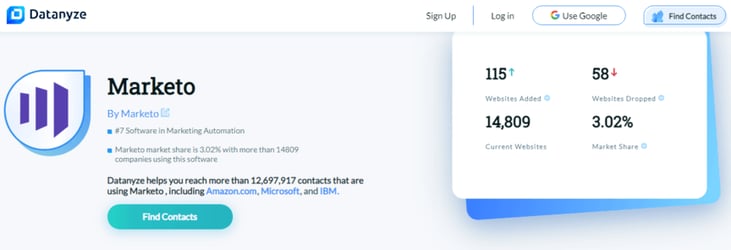
Datanyze sent Marketo users personalized emails and advertisements, complete with case studies showing how Datanyze could help them improve their results.
10. Personify
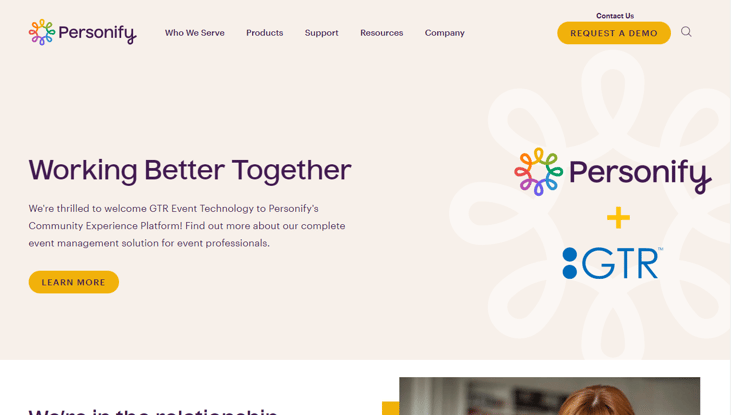
Creating buyer personas and understanding your target audience are essential components of an effective account-based marketing strategy. Once you've identified your target audience, you can begin designing promotions that will appeal to them.
- Demographics
- Interests
- Industry
- Job position in their company
- Purchase history
- And more
This account-based marketing example from Personify is exemplary, which is why it is one of the best. To identify its target audience and define its ideal clients, Personify aligned its sales and marketing teams.
By doing so, they were able to target more valuable accounts and personas for their business. Personify was also equipped with the necessary audience data to guide its marketing messages.
Through the use of tailored digital advertising campaigns, they could target particular accounts to suit their company needs, the current stage in the sales funnel, industry type, and key pain points.
Personify's ABM strategy increased its brand awareness, heightened engagement with adverts, and resulted in higher click-through rates and conversions.
Grow with ABM
Account-Based Marketing can be an extremely effective tool for B2B companies when done correctly. Above are some great examples of ABM campaigns that have been successful in reaching the target account and ultimately driving more conversions. However, it's important to tailor your strategy to fit your individual goals and ensure you are doing everything you can to maximize ROI.
With the right combination of data, technology, creativity, and re-marketing efforts all working in harmony, your business can achieve impressive results that will help you acquire new customers through marketing and drive sustainable growth for your business.



